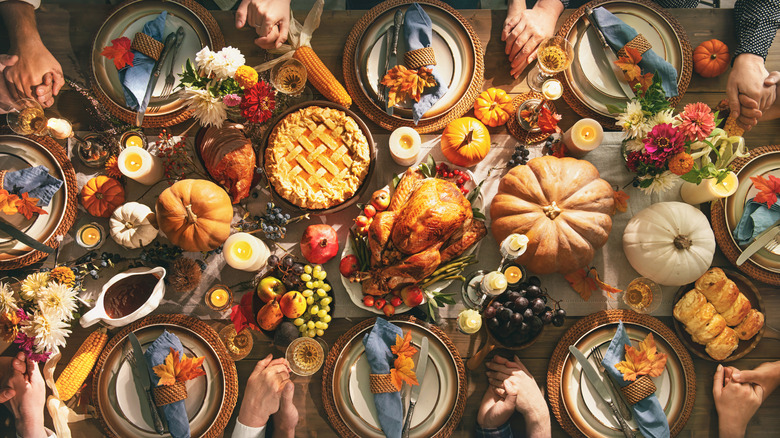Food Event Planning and Management: A Comprehensive Guide
Planning and managing a food event is an intricate process that requires attention to detail, creativity, and organizational skills. Whether it’s a corporate event, a wedding, or a casual get-together, the food aspect often plays a central role in its success. This comprehensive guide will walk you through the essential steps to effectively plan and manage a food event, ensuring your guests are satisfied and impressed.
Understanding the Scope of Your Event
The first step in food event planning is to clearly define the scope of the event. This involves understanding the type of event you’re hosting, the number of guests expected, the event’s purpose, and any specific themes or preferences.
1. Type of Event
- Corporate Events: These events typically require a professional and polished approach, focusing on efficient service and sophisticated cuisine.
- Weddings: A wedding demands a more personalized touch, with menus that reflect the couple’s tastes and cultural traditions.
- Private Parties: These could range from birthday parties to anniversary celebrations, often characterized by a more relaxed atmosphere and diverse menu options.
- Public Events: Events like food festivals or charity fundraisers often cater to a large audience with varying tastes, requiring a broad selection of food options.
2. Guest Count
- Accurate Estimates: An accurate headcount is crucial for planning the quantity of food, seating arrangements, and service staff needed.
- Demographic Considerations: Understanding the age group, cultural background, and dietary preferences of your guests can help tailor the menu to their tastes.
3. Event Purpose
- Celebratory: For events focused on celebration, the food should be indulgent and plentiful.
- Networking: For networking events, consider finger foods and small bites that encourage mingling.
- Educational or Promotional: These events might feature themed menus or foods that align with the event’s message or products being promoted.
4. Theme and Style
- Cultural Themes: If your event has a specific cultural theme, ensure the menu reflects authentic flavours and traditions.
- Seasonal Themes: Seasonal ingredients and dishes not only enhance the flavour but also tie into the time of year, making the event feel timely and relevant.
- Formality: The formality of the event will dictate whether you opt for a sit-down meal, buffet, or casual food station.

Budgeting and Cost Management
Budgeting is one of the most critical aspects of food event planning. A well-planned budget will help you allocate resources efficiently and avoid overspending.
1. Setting a Budget
- Per-Person Cost: Determine how much you are willing to spend per guest, including food, beverages, and service.
- Hidden Costs: Consider additional costs like rentals (tables, chairs, linens), service charges, gratuities, and taxes.
- Contingency Fund: Always allocate a portion of your budget for unexpected expenses or last-minute changes.
2. Vendor Negotiations
- Compare Quotes: Obtain quotes from multiple vendors to ensure you are getting the best value.
- Package Deals: Many caterers offer package deals that include food, beverages, and service, which can be more cost-effective.
- Negotiate: Don’t hesitate to negotiate with vendors for better rates or added services at no extra cost.
3. Prioritizing Spending
- Essential Elements: Focus on the most critical aspects of the food experience, such as quality ingredients and skilled service staff.
- Non-Essential Extras: While extras like elaborate decorations or premium wines can enhance the event, they should only be considered if the budget allows.
Menu Planning
The menu is the heart of any food event. It’s essential to craft a menu that not only delights the palate but also aligns with the event’s theme and audience preferences.
1. Understanding Guest Preferences
- Dietary Restrictions: Always account for common dietary restrictions such as vegetarian, vegan, gluten-free, or allergies.
- Cultural Sensitivities: Ensure the menu respects cultural or religious food practices.
- Guest Feedback: If possible, gather feedback from guests beforehand to understand their preferences.
2. Menu Structure
- Appetizers: Start with light, bite-sized appetizers that are easy to eat while socializing.
- Main Course: The main course should be substantial and satisfying, with options to cater to different dietary needs.
- Desserts: End on a sweet note with a variety of desserts that cater to different tastes – from rich chocolate options to light fruit-based treats.
- Beverages: Offer a range of beverages, including alcoholic and non-alcoholic options, to complement the food.
3. Seasonality and Sourcing
- Seasonal Ingredients: Use seasonal ingredients to ensure freshness and enhance flavour.
- Local Sourcing: Consider sourcing ingredients locally, not only for freshness but also to support local businesses and reduce the environmental impact.
4. Presentation
- Aesthetic Appeal: The presentation of food should be visually appealing, with attention to colour, texture, and plating.
- Theme Alignment: Ensure the food presentation aligns with the overall theme of the event.
Freelance Business Ideas: A Comprehensive Guide to Starting Your Own Freelance Venture
Vendor Selection and Management
Selecting the right vendors is crucial to the success of your food event. This includes caterers, bartenders, rental companies, and any other suppliers involved in the food and beverage service.
1. Choosing the Right Caterer
- Reputation: Research potential caterers by reading reviews, checking references, and sampling their food.
- Experience: Choose a caterer with experience in handling events similar to yours.
- Flexibility: Ensure the caterer is flexible and willing to accommodate special requests or last-minute changes.
2. Coordinating with Vendors
- Clear Communication: Maintain clear and consistent communication with all vendors to ensure everyone is on the same page.
- Contracts: Always have a written contract that outlines all services, costs, and expectations.
- Timeline: Develop a detailed timeline with your vendors to ensure smooth coordination on the day of the event.
3. Staffing Considerations
- Service Staff: Depending on the size and style of your event, you may need waitstaff, bartenders, or even chefs on-site.
- Staff Training: Ensure that all service staff are well-trained and understand the flow of the event.
- Guest Ratio: A general rule of thumb is to have one server for every 10-15 guests at a sit-down meal, or one server for every 20-30 guests at a buffet.
Venue Selection and Layout
The venue plays a significant role in the overall experience of your event. It’s essential to choose a venue that suits the size, theme, and style of your event, and to plan a layout that facilitates a smooth flow of service.
1. Selecting the Venue
- Capacity: Ensure the venue can comfortably accommodate your guest list, with ample space for food service areas.
- Location: Choose a location that is easily accessible to your guests and fits the event’s theme.
- Facilities: Consider the venue’s kitchen facilities, availability of power outlets, and other logistical aspects that could impact food service.
2. Layout Planning
- Food Stations: If you’re using food stations, ensure they are strategically placed to avoid crowding and allow easy access for all guests.
- Seating Arrangements: Plan seating that complements the food service style, whether it’s a sit-down meal, buffet, or casual seating.
- Flow of Service: The layout should facilitate a smooth flow of service, with clear paths for servers and guests.
3. Decor and Ambiance
- Thematic Decor: Decorate the venue in line with the event’s theme, using elements that enhance the dining experience.
- Lighting: Use lighting to create the right ambience, whether it’s a formal dinner or a casual gathering.
- Table Settings: Pay attention to details like tablecloths, centrepieces, and place settings, as these contribute to the overall aesthetic.
Translation and Localization Services: Bridging Cultures and Expanding Markets
Logistics and Execution
On the day of the event, meticulous logistics management ensures everything runs smoothly. This involves coordinating with vendors, managing the timeline, and handling any unexpected issues.
1. Day-of Coordination
- Timeline Management: Stick to the event timeline, ensuring that food service runs on schedule.
- Vendor Coordination: Maintain contact with all vendors to ensure timely delivery and setup.
- Contingency Planning: Be prepared with backup plans for potential issues like weather changes or equipment malfunctions.
2. Food Safety and Hygiene
- Food Handling: Ensure that all food is prepared, stored, and served in compliance with food safety regulations.
- Temperature Control: Keep hot foods hot and cold foods cold to prevent foodborne illnesses.
- Sanitation: Make sure that all food preparation and service areas are clean and sanitary.
3. Service Execution
- Guest Experience: Focus on delivering a seamless and enjoyable experience for guests, from the moment they arrive to the last bite of dessert.
- Feedback Collection: If possible, gather feedback from guests during or after the event to gauge their satisfaction.

Post-Event Follow-Up
After the event, there are still a few tasks to complete. A proper follow-up can leave a lasting impression and help in planning future events.
1. Vendor Payments and Reviews
- Final Payments: Ensure all vendors are paid according to the terms of their contracts.
- Reviews: Leave reviews for your vendors and suppliers, particularly if they did an outstanding job.
- Debriefing: Conduct a debrief with your team to discuss what went well and areas for improvement.
2. Guest Follow-Up
- Thank You Notes: Send thank you notes to guests, especially if it was a smaller, more personal event.
- Surveys: Consider sending out a survey to gather feedback that could improve future events.
- Sharing Photos: Share photos or highlights from the event with guests, which can also serve as a promotional tool for your services.
Social Media Management: Strategies, Tools, and Best Practices for Success
Trends in Food Event Planning
Keeping up with trends in food event planning can give your event an edge and make it more memorable for your guests.
1. Sustainability
- Eco-Friendly Practices: Use biodegradable or reusable serving ware, and minimize food waste by accurately estimating quantities.
- Sustainable Sourcing: Choose ingredients from sustainable and local sources to reduce the event’s environmental impact.
2. Interactive Food Stations
- Live Cooking: Interactive stations where guests can watch chefs prepare dishes on the spot add an element of entertainment and personalization.
- DIY Stations: Allow guests to customize their food at stations like build-your-own tacos or personalized dessert bars.
3. Health-Conscious Menus
- Plant-Based Options: Increasingly popular, plant-based menus cater to a growing number of guests who prefer vegetarian or vegan options.
- Allergen-Friendly: Ensure your menu includes options for guests with food allergies or intolerances.

Planning and managing a food event requires a blend of creativity, organizational skills, and attention to detail. By understanding the scope of your event, managing your budget wisely, crafting a thoughtful menu, selecting the right vendors, and executing a well-organized plan, you can create a memorable experience for your guests. Whether you’re hosting a small intimate gathering or a large public event, following the steps outlined in this guide will help ensure that your food event is a resounding success.




Post Comment